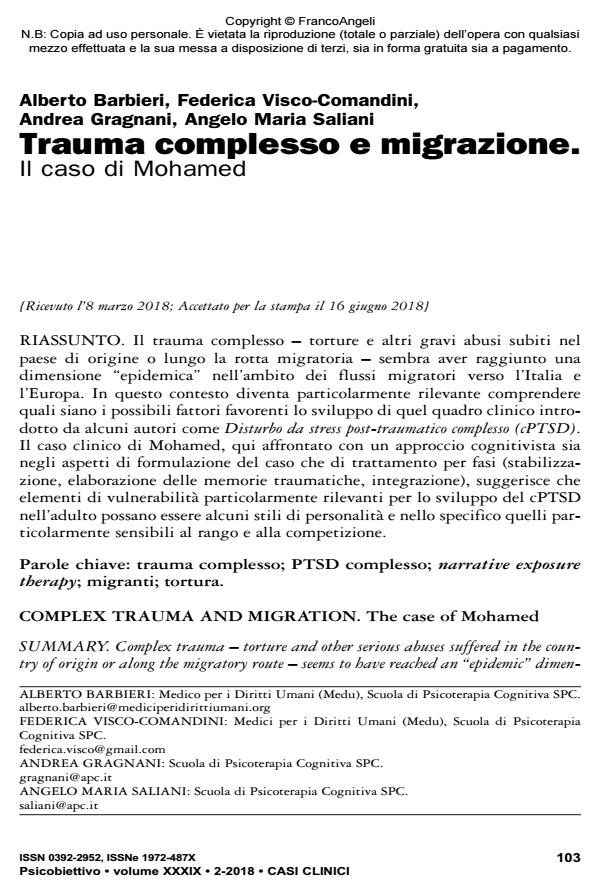Complex trauma and migration. The case of Mohamed
Journal title PSICOBIETTIVO
Author/s Alberto Barbieri, Federica Visco-Comandini, Andrea Gragnani, Angelo Maria Saliani
Publishing Year 2018 Issue 2018/2
Language Italian Pages 22 P. 103-124 File size 292 KB
DOI 10.3280/PSOB2018-002007
DOI is like a bar code for intellectual property: to have more infomation
click here
Below, you can see the article first page
If you want to buy this article in PDF format, you can do it, following the instructions to buy download credits

FrancoAngeli is member of Publishers International Linking Association, Inc (PILA), a not-for-profit association which run the CrossRef service enabling links to and from online scholarly content.
Complex trauma - torture and other serious abuses suffered in the coun- try of origin or along the migratory route - seems to have reached an "epidemic" dimension in the context of migratory flows towards Italy and Europe. In this context it becomes particularly relevant to understand the possible factors favoring the development of the clinical picture that has been introduced by some authors as Complex Post Traumatic Stress Disorder (cPTSD). The clinical case of Mohamed, addressed here with a cognitivist approach both in the aspects of case formulation and phase-oriented treatment (stabilization, processing of traumatic memories, integration) suggests that elements of vulnerability particularly relevant for the development of cPTSD in adult can be some personality styles and specifically those particularly sensitive to rank and competition.
Keywords: Complex Trauma; Complex PTSD; Narrative Exposure The- rapy; Migrants; Torture.
Alberto Barbieri, Federica Visco-Comandini, Andrea Gragnani, Angelo Maria Saliani, Trauma complesso e migrazione. Il caso di Mohamed in "PSICOBIETTIVO" 2/2018, pp 103-124, DOI: 10.3280/PSOB2018-002007